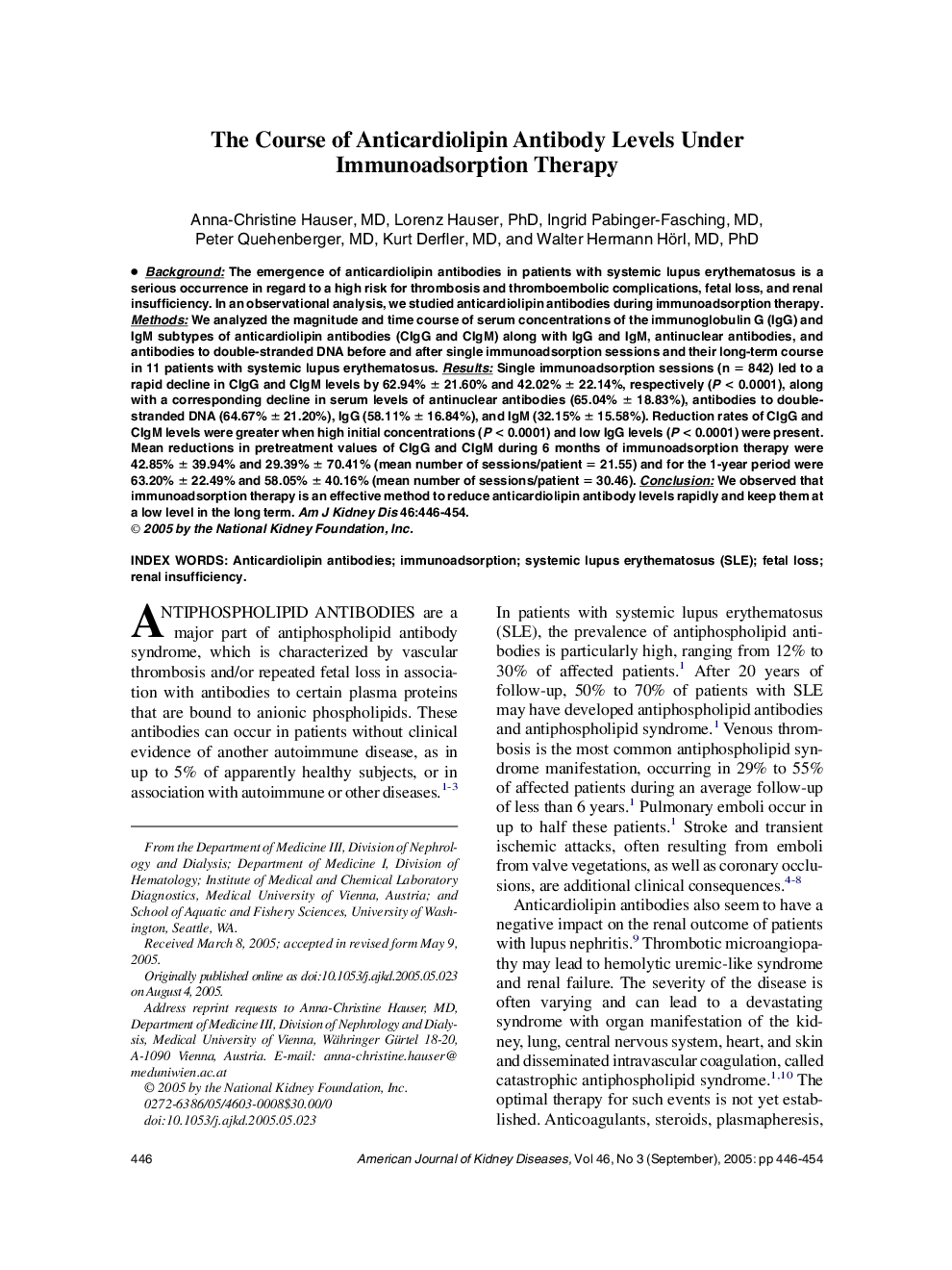| Article ID | Journal | Published Year | Pages | File Type |
|---|---|---|---|---|
| 10047420 | American Journal of Kidney Diseases | 2005 | 9 Pages |
Abstract
Background: The emergence of anticardiolipin antibodies in patients with systemic lupus erythematosus is a serious occurrence in regard to a high risk for thrombosis and thromboembolic complications, fetal loss, and renal insufficiency. In an observational analysis, we studied anticardiolipin antibodies during immunoadsorption therapy. Methods: We analyzed the magnitude and time course of serum concentrations of the immunoglobulin G (IgG) and IgM subtypes of anticardiolipin antibodies (CIgG and CIgM) along with IgG and IgM, antinuclear antibodies, and antibodies to double-stranded DNA before and after single immunoadsorption sessions and their long-term course in 11 patients with systemic lupus erythematosus. Results: Single immunoadsorption sessions (n = 842) led to a rapid decline in CIgG and CIgM levels by 62.94% ± 21.60% and 42.02% ± 22.14%, respectively (P < 0.0001), along with a corresponding decline in serum levels of antinuclear antibodies (65.04% ± 18.83%), antibodies to double-stranded DNA (64.67% ± 21.20%), IgG (58.11% ± 16.84%), and IgM (32.15% ± 15.58%). Reduction rates of CIgG and CIgM levels were greater when high initial concentrations (P < 0.0001) and low IgG levels (P < 0.0001) were present. Mean reductions in pretreatment values of CIgG and CIgM during 6 months of immunoadsorption therapy were 42.85% ± 39.94% and 29.39% ± 70.41% (mean number of sessions/patient = 21.55) and for the 1-year period were 63.20% ± 22.49% and 58.05% ± 40.16% (mean number of sessions/patient = 30.46). Conclusion: We observed that immunoadsorption therapy is an effective method to reduce anticardiolipin antibody levels rapidly and keep them at a low level in the long term.
Keywords
Related Topics
Health Sciences
Medicine and Dentistry
Nephrology
Authors
Anna-Christine MD, Lorenz PhD, Ingrid MD, Peter MD, Kurt MD, Walter Hermann MD, PhD,
